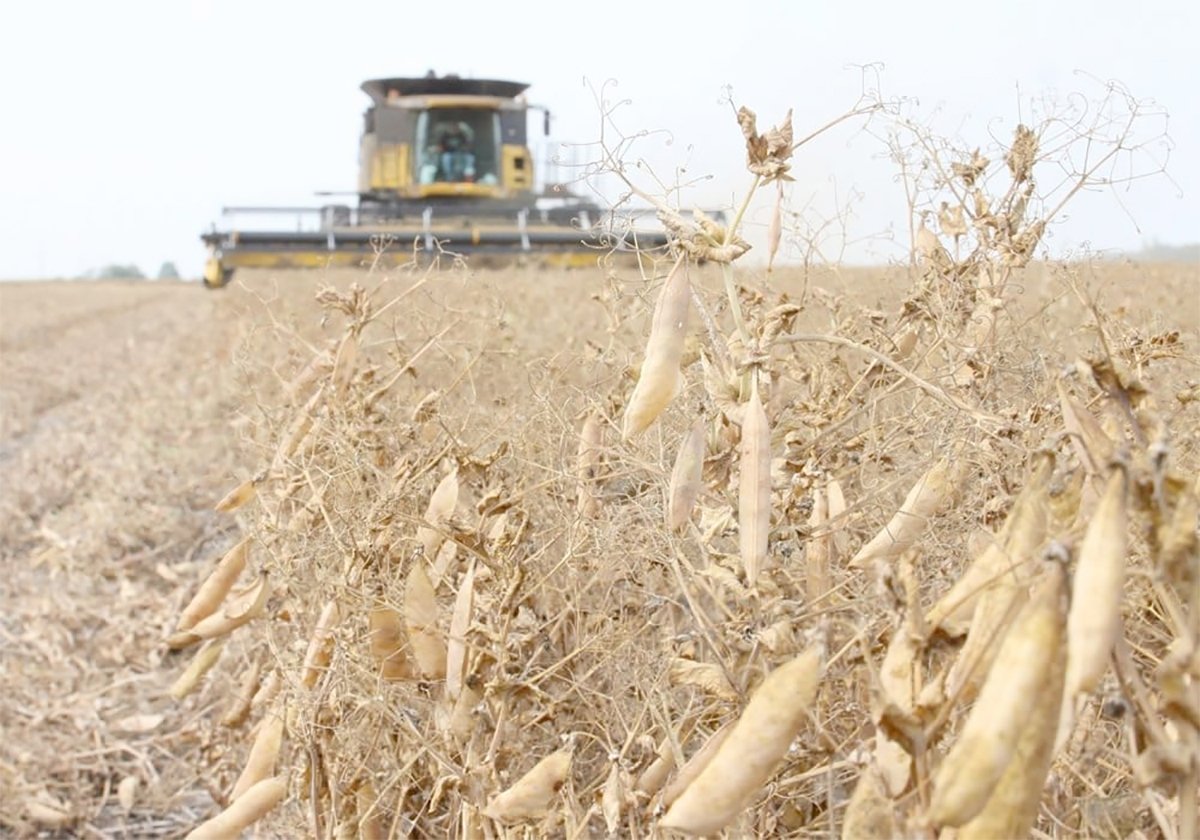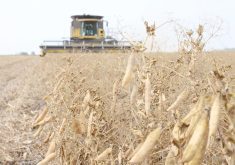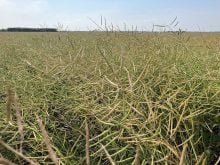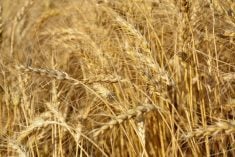Manitoba Threshermen’s Reunion introduced next generation to a world of worn-out tractors, tired horses and old farmers
The first reunion I ever attended did not highlight old teachers, former students, and long speeches about the good old days.
Instead, this reunion featured worn out tractors, rusting farm machinery, tired horses, and old farmers. They all came together at the Manitoba Threshermen’s Reunion in 1971.
Dad and a church friend, Cecil Sundmark from Erickson, Man., decided to take a late-July day off from farming and head to Austin, Man.
There was a whole back seat available so brother David and I piled in. We too escaped the farm work for a day.
Read Also

Chinese, Indian tariffs take toll on pea prices
The disruption of pea exports from Canada’s largest customers will likely result in slow pea exports for the remainder of the crop year.
After a two-hour drive, we arrived at the Threshermen’s Reunion, just when the morning parade was underway. Perfect. For us farm boys from Basswood, Man., it was a feast for the senses.
We had never seen one steam-powered tractor, let alone the sight of 20 of them, huffing and puffing in a long line-up. The clanking of gears and the grinding of steel wheels on a gravel road assaulted the ears. And then there was the smell of burning coal to power them (boil water to make steam). They lumbered along.
My dad suggested that there was plenty of iron and weight for so little horsepower. Cecil agreed. The gravel crunched loudly under the steel wheels. Our main tractor, the Deutz, at 65 horsepower would compare well with these clunkers — and the Deutz wouldn’t take half a day just to get out to the field.
David and I were fascinated with the steering. Huge chains attached to the front axle. The steering mechanism pulled in one end of the chain and paid out the other end using a “worm gear,” Dad called it. The front wheels wobbled and weaved, but the system worked.
Neither Dad nor Cecil, both born in the mid-1920s, had any experience around these steam tractors. Gasoline-powered tractors had been seen on the Prairies in the earlier 1900s.
Dad said he remembered breaking land with a gas 10-20 McCormick as a teenager in about 1940. He explained that the numbers meant 10 h.p. on the drawbar and 20 h.p. on the belt pulley.
Dad also mentioned he earned $1 per day in the years stretching from the Great Depression to the Second World War. Plus, he gave that salary to his father to help bolster the family finances. Dad was one of 11 children who were raised on a farm near Steinbach, Man.
The draft horses were next on parade. The farm implements they pulled seemed small: an eight-foot seed drill, a seven-foot cultivator, and a hay mower with a six-foot cutter bar. Both Dad and Cecil agreed that they were glad those days were gone — it would take forever to finish a field.
Comfort was not an issue either because there was none. Plunk down on a metal seat on the implement, grab the reins, and endure the dust and the heat (and the horse smells). Air-conditioning may have meant a slight breeze or when a cloud shaded the sun.
We enjoyed the vintage tractors passing by, many restored, some in “working clothes.” The two-cylinder models seemed to cough roughly with each firing of a spark plug. The whole tractor seemed to convulse uncomfortably. “Sneeze and wheeze,” an old-timer quipped.
Dad recalled a neighbour getting a new John Deere Model D tractor delivered in the mid-1940s. It became a half-day event as other neighbours came by for a look. The 42 h.p. (drawbar rating) was powerful and pulled the old horse-drawn implements with ease.
“The speeds were dangerous when cornering,” Dad noted.
The antique tractors did spur that age-old and on-going debate though — which make of tractor is the best. By the time Dad and Cecil got into it, they had strolled so far down memory lane that David and I had to run to catch up. Dad preferred International-Harvester, but Cecil owned a Case. Never-ending and never settled, their Great Tractor Debate carried on for hours.
A few other items caught their attention. A hayrack full of one-cylinder stationary motors paraded past, announced with noise and exhaust smoke. Those motors were the power source for pumps, augers, elevators and small grain crushers before electric motors arrived.
Another hayrack featured horse equipment like collars, leather harnesses, and eveners to balance the power of four or five horses hooked onto the same implement. Dad knew all about it but said he didn’t want any part of it.
“I’m glad those days are gone,” he muttered.
A few odd and unusual items came along. Somebody had an older tractor pushing a swather, which sort of made it self-propelled. Cecil thought it had merit.
Then two identical tractors came along linked together — neither had front wheels. The front of the back one hung on the back of the front one, connected by a massive iron hinge. It steered when large hydraulic cylinders manoeuvred the front tractor to the right or to the left. An assortment of push/pull or rotating rods allowed the back tractor driver to operate the front also. Strange.
Dad said he had heard of this dual hook-up used on the vast open fields of Alberta or Saskatchewan. He figured that these new four-wheel drive tractors made by Versatile Manufacturing in Winnipeg would render the tandem hitch obsolete. In hindsight, Dad guessed correctly.
In 1969, a Basswood neighbour had bought a 118 horsepower Versatile. The articulated steering tractor even had a cab, but it had “no AC and (was) loud,” his son Andy Cardy recalled 52 years later.
As the parade wound down, David and I began to explore.
“Watch for old boards with rusty nails sticking out,” Dad cautioned.
Dad had entrusted David with a few dollars and so we bought egg salad sandwiches and saskatoon pie instead of pop and chocolate bars. The pie tasted top-notch. Hey, we could handle money responsibly.
In search of adventure, we just wandered through buildings and along rows of old machinery in the back bush and pasture. The implements rested in deep grass, and had begun to rust. “Rust in peace,” David said.
We laughed about that for the rest of the day.
It was soon mid-afternoon, and with chores to do, it was time to head home. Dad found us. Cecil was already in his car, ready to turn the key.
On the way home, David and I snoozed in the back seat. We could hear the engine humming and the constant rumbling of deep man voices in the front seat, still sparring over which tractor brand was the best.
“We couldn’t have edged a word in sideways,” David later remarked.
We laughed again.
Arriving at home, Mom was worried that her boys had gotten too much sun. She quickly lathered lotion on our faces.
Mr. Sundmark took off for home. He had an extra 25-minute drive.
In the days afterward, Dad mentioned the old machines. I believe he was happy that he was farming in what was the modern era of agriculture at that time.
“We have things easy compared to the olden days,” he said.
I don’t know what he would have thought about a 600 h.p. tractor pulling a 76-foot seeder. “As long as horses aren’t involved,” he may have commented.















